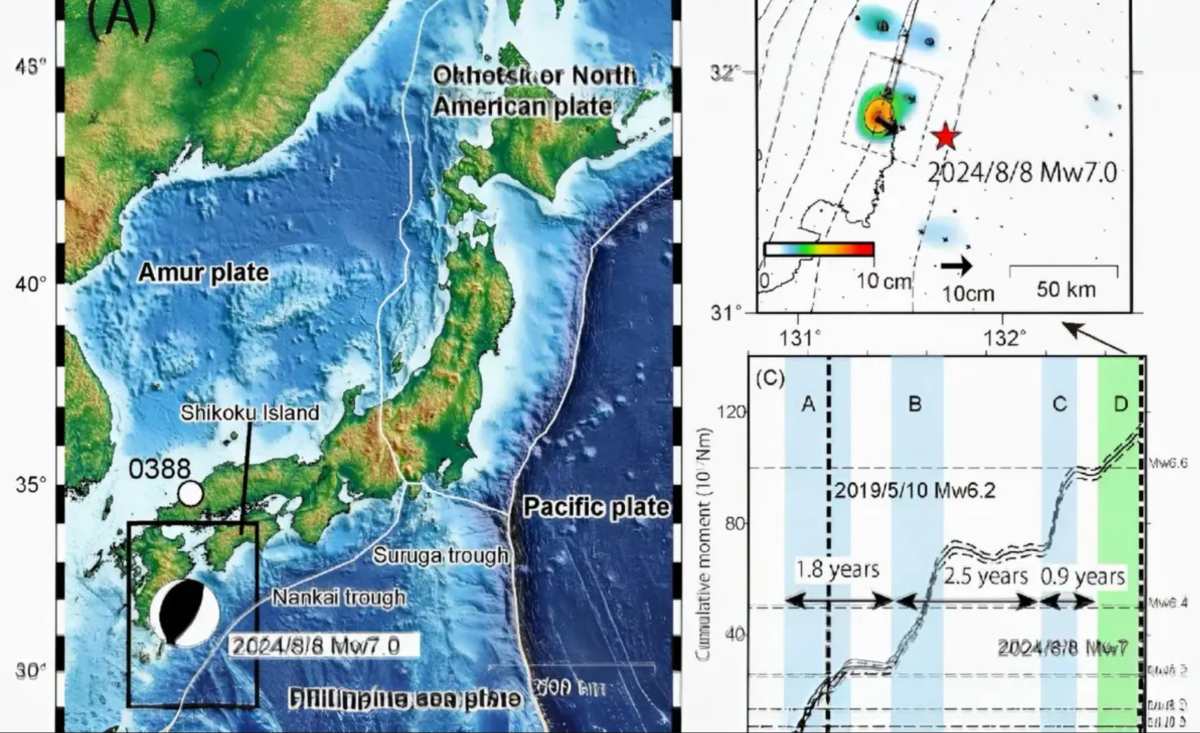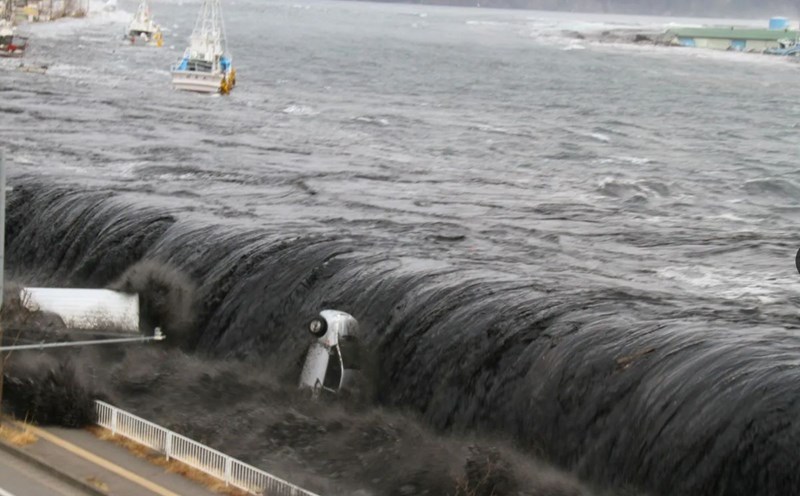A strange earthquake has just been recorded by scientists at the bottom of the Pacific Ocean, where the Philippine Sea is quietly sinking below Japan.
Not as loud as the usual earthquakes, this earthquake "slipped" for many weeks, moving every millimeter in silence - it could be the key to understanding and predicting future sunsets.
This rare phenomenon occurs in the shallow part of the Nankai ditch, an area that has caused many large earthquakes and deadly sunslides in Japan. First recorded in the fall of 2015 and reappearing in 2020, each of these slow slides extended for decades along the broken fault, starting about 50km from the peninsula of kii and gradually moving towards the ocean trough.
The special thing is that no seismic or GPS device on land felt this phenomenon. Only the underground monitoring network - the eyes buried hundreds of meters below the seabed deployed by Japan - were sensitive enough to record such extremely sophisticated movements.
Its like an underground wave spreading along the contact surface between two tectonic plates, said Josh Edgington, a doctoral data analyst at the University of Texas Institute of Geophysics.

This monitoring system is part of Japan's ambitious scientific drilling program, aiming to block the "blind spot" in global earthquake monitoring. Subsea sensors help scientists track the accumulation and release of tectonic charge in real time.
If the area is regularly released as a slow-slip area, it could act as a natural shock-reducing system, limiting the severity of future earthquakes and sunslides. But if the deeper areas are still tightly locked, the risk of a strong earthquake of level 8 or 9 - such as the disaster in 1946 that killed more than 1,300 people - remains intact.
While Nankai leaked silently, a similar fault in the Northwest Pacific, called Cascadia, reason for the fall. This has raised concerns among seismologists that a silent fracture could be storing energy for a super-large slide, capable of causing a Category 9 earthquake and a comprehensive Tsunami.
The research team is calling for the implementation of similar seabed monitoring systems in Cascadia, Chile and Indonesia - other hot spots in the Pacific Ring Road.
In another development, nearly 900 consecutive earthquakes over the past 10 days in Japan's Tokara Islands have once again raised concerns about the disaster forecast for July.
The comic book by artist Ryo Tatsuki published in 1999 is causing a wave of panic after the author "prophesized" that a terrible earthquake with a Tsunami would attack Japan around July 5-7.
In response to the growing concern, Japan Meteorological Agency (JMA) Director Ryoichi Nomura had to speak up to affirm: With current technology, there is no way to accurately predict the time of the earthquake. He called on people to always be well prepared, but not panic at unverified information.











